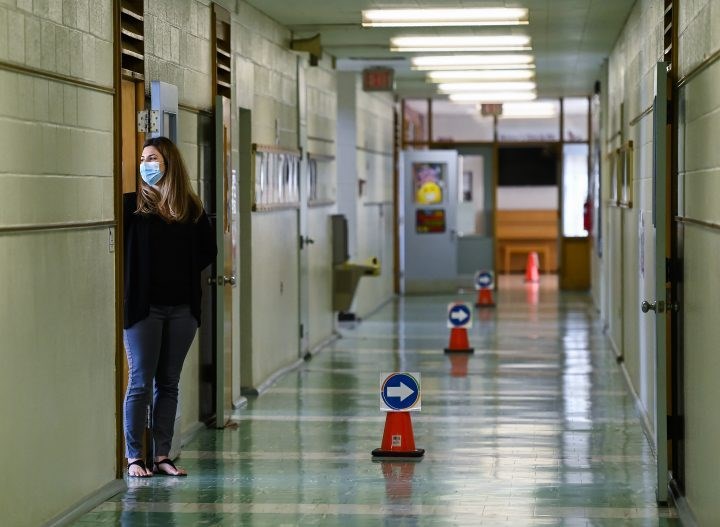As Canada begins roll out and administer its first shipments of the coronavirus vaccine, teachers are pushing to get themselves among the nation’s top priority list.
The Canadian Teachers’ Federation (CTF) previously called for governments across Canada to let teachers and educators be among the first in line to get the COVID-19 vaccine, arguing their high risk of exposure.
“They are in close contact with students and other adults, indoors, for many hours at a time, every day, usually with poor ventilation,” read a statement released Tuesday from the CTF, which is comprised of over 300,000 educators and teachers across Canada.
“Even if schools try to maintain social distance, the reality is that sufficient physical distancing to prevent transmission of the COVID virus is not possible in many classrooms and schools.”
According to recommendations from Canada’s National Advisory Committee on Immunization (NACI), front-line health-care workers, seniors and long-term care home residents and staff should be among the first to to receive the vaccine, with some provincial health authorities already beginning to inoculate some in those groups since the vaccines’ arrival Sunday.
Teachers, however, are not included in the NACI’s initial recommendation on who to vaccinate first, though several experts and groups have placed them among others as next in line to get the vaccine.
According to infectious diseases expert Dr. Isaac Bogoch, the top priority clearly remains front-line health-care workers, those who live and work in long-term care homes, populations aged 70 and above and Indigenous communities.
Bogoch, however, did pose the question: what do we do after we vaccinate our top priority group?
According to him, authorities administering the vaccine should be pay attention to three factors before deciding who to inoculate next — who’s at greater risk of getting infected, who’s at greater risk of having a severe outcome over an infection and who are the people working in settings where getting infection could be “significantly amplified.”
“Obviously, teachers certainly would fall into that given their work and their potential exposures,” Bogoch told Global News.
“So I think that’s very reasonable. But I would also expand that to lots of other people as well.”
Police officers, those in essential industries such as grocery stores, factories and food processing or anyone vital to the economy working in close indoor settings and in close proximity to other people should also be considered for the vaccine, said Bogoch.
“So while I certainly agree with teachers, I’d expand that to other essential workers who might be at greater risk of getting this infection.”
It’s a position shared by others, including the Ontario Medical Association (OMA). According to the group of Ontario doctors, those at highest risk of contracting COVID-19 should be the top priority for the vaccine, but added that other groups to be vaccinated in subsequent phases include essential workers, as well as teachers and those in communal facilities like shelters and prisons.
According to the results of an Ipsos poll conducted last month, front-line workers, first responders, seniors and long-term care home staff ranked as the highest in who should get vaccinated first. Schoolteachers and essential workers garnered 20 per cent and 24 per cent, respectively, of agreement that they should be among the first in line to get their shot.
In their statement, however, the CTF argued that education workers would be easily exposed to the disease as students under the age of 16 have not been approved to take the vaccine.
Bogoch said that while that point was valid, it wouldn’t make sense to vaccinate kids now since only high-priority groups were receiving vaccines for the time being.
“We’re still in phase one. So it’s going to take some time for these vaccine programs to readily expand,” said Bogoch.
“I don’t disagree with teachers. Don’t get me wrong. I think that’s very reasonable. But I also think that those conversations should include others that fall into that category, like other essential workers who are at greater risk of getting or amplifying, unfortunately, this infection based on where they work.”
- Global News
